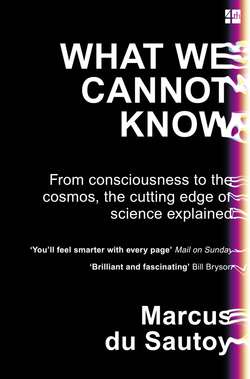Читать книгу What We Cannot Know: Explorations at the Edge of Knowledge - Marcus Sautoy du - Страница 29
Feedback equation for population dynamics
ОглавлениеSuppose I consider an animal population whose numbers can vary between 0 and some hypothetical maximum value that I will call N. Given some fraction Y (lying between 0 and 1) of that maximum, the equation determines what in the next season is the revised fraction of the population that survives after reproduction and competition for food. Let’s suppose that each season the reproduction rate is given by a number r. So that if the fraction of the maximum population that survived to the end of the season was Y, the next generation swells to r × Y × N.
But not all of these new animals will survive. The equation determines that the fraction that will not survive is also given by Y. So out of the r × Y × N animals that start the season, Y × (r × Y × N) die. So the total left at the end of the season is (r × Y × N) – (r × Y2 × N) = [r × Y × (1 – Y)] × N, which means that the fraction of the maximum population that exists in the current season is r × Y × (1 – Y).
Essentially the model assumes that at the end of each season the surviving population gets multiplied by a constant factor, called r, the reproduction rate, to produce the number of animals at the beginning of the next season. But there aren’t enough resources for them all to survive. The equation then calculates how many of these animals will make it till the end of the season. The resulting number of animals that survive then gets multiplied by the factor r again for the next generation. The fascinating property of this equation is that its behaviour really depends only on the choice of r, the reproduction rate. Some choices of r lead to extremely predictable behaviours. I can know exactly how the numbers will evolve. But there is a threshold beyond which I lose control. Knowledge is no longer within reach because the addition of one extra animal into the mix can result in dramatically different population dynamics.
For example, May discovered that if r lies between 1 and 3 then the population eventually stabilizes. In this case it doesn’t matter what the initial conditions are, the numbers will gradually tend to a fixed value depending on r. It’s like playing billiards on a table where there is a sinkhole in the middle. However I shoot the ball off, it eventually finds its way to the bottom of the sinkhole.
For r above 3, I still see a region of predictable behaviour but of a slightly different character. With r between 3 and 1 +√6 (which is approximately 3.44949), the population dynamics eventually ping-pong between two values that depend on r. As r passes 1 +√6, we see the population dynamics changing character again. For r between 1 +√6 and 3.54409 (or more precisely the solution of a polynomial equation of degree 12), there are 4 values that the population periodically cycles through. As r gets bigger, I get 8 values, then 16, and so on. As r climbs, the number of different values doubles each time until I hit a threshold moment when the character of the dynamics flips from being periodic to chaotic.
When May first explored this equation, he admitted that he frankly hadn’t a clue what was going on beyond this point – he had a blackboard outside his office in Sydney on which he offered a prize of 10 Australian dollars to anyone who could explain the behaviour. As he wrote on the blackboard: ‘It looks like a mess.’
It was on a visit to Maryland that he got his answer and where the term ‘chaos’ was actually coined. In the seminar he gave, he explained the region in which the period doubles but admitted he’d hit a point beyond which he didn’t know what the hell was happening. In the audience was a mathematician who did know. Jim Yorke had never seen the doubling behaviour but he knew exactly what was going on in this higher region. And it was what he called chaos.
Beyond r = 3.56995 (or more precisely the limit point of the solutions of a system of equations of increasing degree), the behaviour becomes very sensitive to what the initial population looks like. Change the initial number of animals by a minute amount and a totally different result can ensue.
Two populations with r = 4 that start off with a difference of just one animal in a thousand. Although they start behaving similarly, by year 15 they are demonstrating very different behaviours.
But as I turn up the dial on r, there can still be pockets of regular behaviour, as Jim Yorke had discovered. For example, take r = 3.627 and the population becomes periodic again, bouncing around between 6 different values. Keep dialling r up and the 6 changes to 12 which becomes 24, doubling each time until chaos strikes again.
Bob May recognized just what a warning shot such a simple system was to anyone who thought they knew it all: ‘Not only in research, but in the everyday world of politics and economics, we would be better off if more people realized that simple systems do not necessarily possess simple dynamic properties.’
